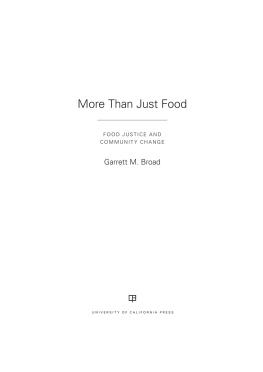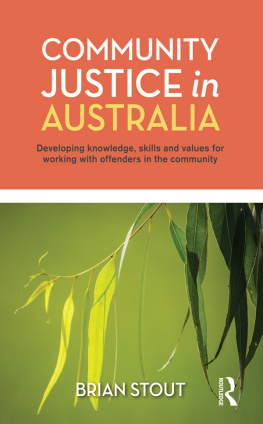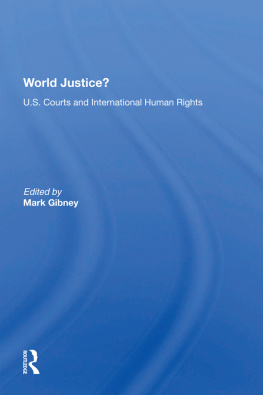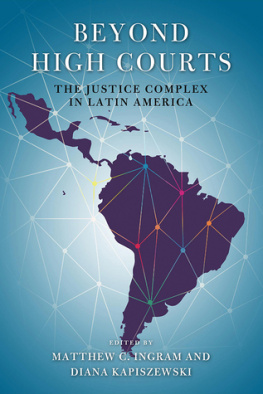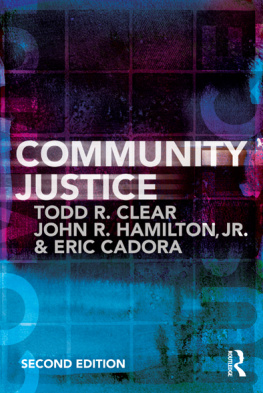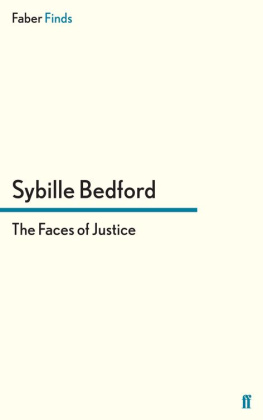Copyright 2000 OPA (Overseas Publishers Association) N.V. Published by license under the Harwood Academic Publishers imprint, part of The Gordon and Breach Publishing Group.
All rights reserved.
No part of this book may be reproduced or utilized in any form or by any means, electronic or mechanical, including photocopying and recording, or by any information storage or retrieval system, without permission in writing from the publisher.
First published in 2000 by Harwood Academic Publishers
This edition published 2013 by Routledge
2 Park Square, Milton Park, Abingdon, Oxon OX14 4RN
711 Third Avenue, New York, NY 10017
Routledge is an imprint of the Taylor & Francis Group, an informa business
This research project was supported under award 93-IJ-CX-0082 from the National Institute of Justice, Office of Justice Programs, U.S. Department of Justice and under awards SJI-93-12A-E-194 and SJI-93-12A-E-P93-1 from the State Justice Institute. Points of view in this document are those of the authors and do not necessarily represent the official position of the U.S. Department of Justice or of the State Justice Institute.
British Library Cataloguing in Publication Data
Dispensing justice locally : the implementation and effects of the midtown community court
1. New York (N.Y.) . Midtown Community Court
2. Criminology-New York (State)-New York
I. Sviridoff, Michele
345.74701
ISBN 90-5702-614-7
Since opening in October 1993, New York Citys Midtown Community Court has become a well-established local institution serving the neighborhoods of Times Square, Chelsea and Clinton (formerly known as Hells Kitchen). The Court does far more than process its caseload of misdemeanor arraignments. It produces more meaningful outcomesboth for the defendants and the neighborhood that has been victimized by crime. This means sentencing offenders to a variety of community service projects that have a palpable effect on the quality of life in Midtown neighborhoods. It means bringing health care professionals, addiction specialists, educators and other social service providers into the courthouse to help solve the problems that often bring defendants to court. And it means reaching into the broader community to identify and respond to problems that dont traditionally enter a court. As a result, individual lives are transformed, streets look better, a neighborhood becomes more of a community. However the Courts contribution may be measured, understanding it depends on human stories.
A Judges Question
I like myself, says Midtown defendant, Billy Robertson. Thats the difference. And its a big difference. At the age of 48, Robertson finally appears to have escaped the destructive routine, based on addiction and petty crime, that he had followed for years. He rightfully claims credit for that himself, but he is the first to acknowledge that he had a lot of help.
Arrested yet again for the shoplifting he committed to support his drug habit, Robertson assumed he faced the usual day or two in a holding cell, suffering the sickness of withdrawal, until hed be allowed to plead guilty. At that point, he would be sentenced to the time hed already been held, then released to resume his habit. That was the familiar ritual at the central criminal court Downtown.
But at the Midtown Community Court, the judge paused over his record: some 40 arrests and 30 convictions, all for misdemeanors like criminal trespass and possession of stolen property. Mr. Robertson, she asked him. Do you have a problem?
Yeah, I do, Robertson responded. It was the first time hed ever been asked such a thing by a judge.
Do you need any help?
When Robertson said he figured he did, the judge referred him to a caseworker who began asking a lot of questions about his background, his previous attempts at drug treatment, his willingness to try again. Impressed that he didnt attempt to lie about his record, the caseworker said he would argue for treatment rather than jail.
If Robertson were to agree, however, he would go right into detox from courtno chance to return home for a final binge. The judge would receive regular reports about his progress in the program, including drug test results. If he didnt get with it in a serious way, she could send him to jail. No court had ever offered Robertson terms like this. He decided he was ready for them. He had a son approaching his teens; it was time to get control of his life.
With the judges approval, the caseworkers hustled Robertson off to upstate New York for a couple of weeks in a detox center, followed by immediate enrollment in a treatment program based at a Catholic mission in Albany. All went well for several weeks until Fathers Day arrived and Robertson decided to celebrate by inviting a woman he knew from the city to come up for a visit. They wound up spending the day at a nearby hotel.
When Robertson returned to the mission, he got into an argument with the priests, who told him sternly that they disapproved of his absence. Angry, Robertson took off for New York City, going AWOL though he was only a week or two from a successful graduation.
Back in town, he might have tried to disappear, but he felt bad about checking out on a caseworker who had taken an interest in him. A few days after his return to the city, Robertson went up to the Court and turned himself in.
I was scared, he recalls, since the judge retained the power to send him to jail. As it turned out, however, the caseworkers were not surprised by his early departure from treatment. Relapse is part of recovery, one explains, recalling Robertsons case.
But they werent about to cut him much slack. To avoid jail now, they told him, he would have to re-enter another treatment program and stick it out for the next year. Still committed to getting better, Robertson agreed and went willingly when court-based case managers found him a place in a program run by Project Renewal on the Lower East Side of Manhattan.
There he would stay for eighteen months, with no relapses; eventually the decision to stay became his more than the programs as he began to understand how much his own addiction had depended on the company of other addicts. He didnt want to leave until he knew he could establish himself in a new life. I wanted to stay clean, he says. I wasnt leaving until I had all I needed.
The program helped him prepare. Project Renewal found him a job washing dishes at the restaurant atop the Times Square Hotel, a midtown residence for the homeless that also operates a number of businesses. And the programs counselors encouraged him to enroll at Audrey Cohen College, where he obtained a high school GED and completed 50 hours of course work towards a degree.
While all this went on, Robertson was required to remain in close contact with the Midtown Community Court, showing up for meetings with caseworkers and going before the judge once a month. He began to look forward to these appearances. Shed smile, he says of the judge, and say, Billy, youre doing good. Keep up the good work. Then one day, she said, Mr. Robertson, Im proud of you. You dont need to come back.


